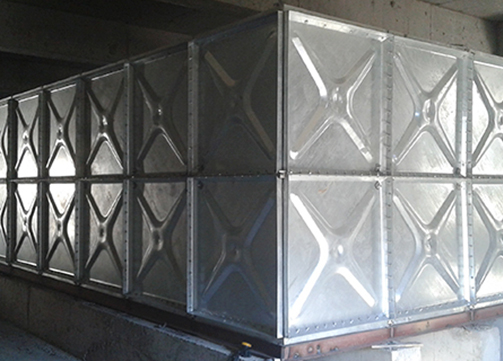HDG Water Tank: A Durable and Cost-Effective Water Storage Solution
Wiki Article
Introduction to HDG Water Tanks
HDG Water Tanks, or Hot-Dip Galvanized water tanks, are steel water storage systems coated with a layer of zinc for enhanced corrosion resistance. These tanks are widely used in domestic, commercial, agricultural, and industrial sectors for water storage. They offer a balance between cost-efficiency and durability, making them a popular choice in regions where water storage is critical.

What Is Hot-Dip Galvanization?
Hot-Dip Galvanization (HDG) is a process where steel panels are dipped into molten zinc, forming a protective coating that shields the tank from rust and corrosion. This coating not only extends the tank’s life but also minimizes maintenance costs.
Key Features of HDG Water Tanks
Corrosion Resistance: The zinc coating acts as a barrier against moisture and air, protecting the steel underneath.
Long Lifespan: With proper care, HDG tanks can last for 20–30 years.
Structural Strength: Made of high-grade steel, these tanks can withstand harsh environmental and climatic conditions.
Modular Design: Most HDG tanks are available in panel form, allowing easy assembly and disassembly.
Leak Prevention: Proper sealing and gasket installation ensure a watertight structure.
Applications of HDG Water Tanks
HDG water tanks are suitable for various applications:
Domestic Use: Storing potable water for daily household needs.
Commercial Use: Used in buildings, hotels, and schools for reliable water supply.
Agricultural Use: Ideal for irrigation, livestock, and rainwater harvesting.
Industrial Use: Suitable for cooling towers, processing plants, and fire protection systems.
Benefits of Using HDG Water Tanks
Cost-Effective: HDG tanks provide excellent durability at a lower price than stainless steel tanks.
Low Maintenance: Thanks to the anti-rust coating, the tank requires less frequent cleaning and repairs.
Easy Installation: Modular HDG panels can be quickly installed on-site without the need for welding.
High Capacity: These tanks can be customized for capacities ranging from a few hundred liters to several hundred thousand liters.
Comparison with Other Types of Water Tanks
HDG vs. Stainless Steel: While stainless steel offers superior corrosion resistance, HDG tanks are more affordable and still offer good protection.
HDG vs. Plastic Tanks: Plastic tanks are lightweight but not as strong or long-lasting as HDG tanks, especially in outdoor or industrial settings.
HDG vs. Concrete Tanks: HDG tanks are easier to install and relocate compared to the bulky and permanent nature of concrete tanks.
Installation Considerations
When installing an HDG water tank:
- Ensure the foundation is level and strong enough to bear the load.
- Use proper sealing materials to prevent leakage between panels.
- Install venting and overflow pipes as needed.
- Always follow the manufacturer’s assembly guidelines.
Maintenance Tips for HDG Water Tanks
Regular Inspection: Check the tank for rust spots, especially at joints and edges.
Clean Periodically: Clean the interior once or twice a year to prevent sediment buildup.
Check Gaskets and Seals: Replace damaged gaskets to prevent leaks and maintain pressure integrity.
Re-galvanize if Needed: In extreme cases, re-coating the tank can extend its usable life even further.
Environmental Benefits
HDG water tanks are recyclable, reducing the environmental impact at the end of their lifecycle. Additionally, they can be used for rainwater harvesting and greywater systems, promoting sustainable water usage. Visit our website https://www.wannengwt.com/ for more details.
Conclusion
HDG water tanks are an excellent choice for anyone seeking a durable, corrosion-resistant, and cost-effective water storage solution. Their long service life, ease of installation, and versatility across different sectors make them a preferred alternative to plastic and concrete tanks. Whether you are storing drinking water, irrigation water, or industrial water, HDG tanks provide a reliable and sustainable option.